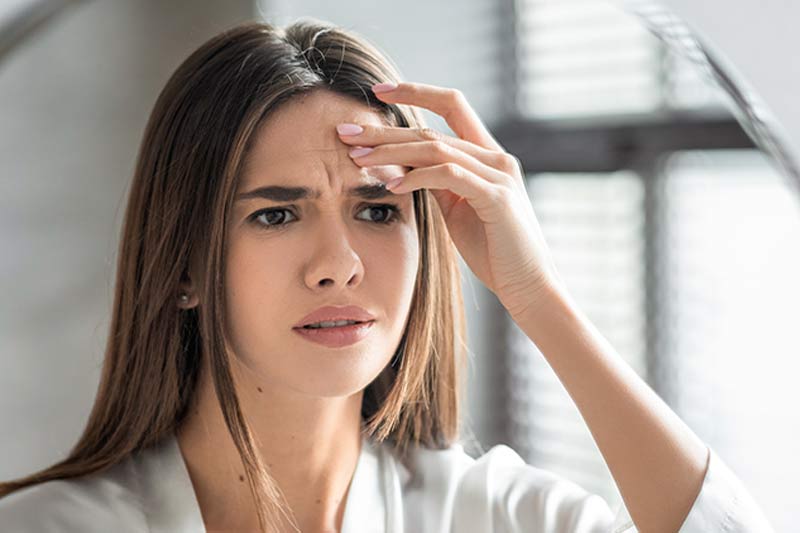Botox is the most popular injectable for eliminating dynamic wrinkles. Botox is one of four FDA-approved brands of neurotoxin injectables, but most people use the name as a generic term for the treatment. They love its rejuvenating effects and return every 3-6 months for a new dose.
However, some patients don’t see any difference in their appearance, either good or bad. Doctors have developed a term for this rare condition – Botox resistance.
This article explains what Botox resistance is, why it develops, and how to deal with it.

What Is Botox Resistance
Botox resistance or Botox immunity is when a patient’s immune system develops antibodies that neutralize the active molecule in the injectable – botulinum toxin type A. Upon injection, the antibodies stick to the molecule before it has a chance to act on the nerve and block nerve signals to the target muscle. Because of the fast action of their immune system, patients experience no change in their appearance.
Botox resistance typically develops in patients who have had Botox for an extended period or who naturally metabolize the neurotoxin very quickly.
How Common Is It?
The condition is very rare. Doctors estimate that one in 10,000 patients who report no effect from the treatment have true Botox resistance. Other patients usually experience less than optimal results for other reasons, such as loss of collagen and skin elasticity, low Botox amount, wrong injection spot, ineffective product due to inadequate storage, etc.
What Causes Botox Resistance?
Medical professionals are not certain why Botox resistance happens. Limited studies and anecdotal evidence suggest the following risk factors for developing neutralizing antibodies to botulinum toxin type A.
1. Extended Botox Use
Most patients who experience true Botox resistance have had the treatment for an extended period. Over time, the body develops antibodies that resist the effects of the neurotoxin.
2. Too Much Botox
Studies show too much Botox per session or a high cumulative dose over years of treatment may lead to Botox immunity. To reduce the risk of developing Botox immunity from too much Botox, ask your provider to administer the lowest Botox dosage for the maximum effect. Also, space your treatments as long apart as possible (per your provider’s recommendation).
3. The Presence of Accessory Non-Toxic Proteins
Botulinum toxin type A is the core active ingredient in four FDA-approved neurotoxin injectable brands: Botox, Dysport, Xeomin, and Jeuveau. With the exception of Xeomin, botulinum toxin type A is wrapped in an envelope of binding proteins that improve its stability. Studies suggest these accessory proteins may potentially induce the antibody response in some patients. Xeomin, on the other hand, uses a unique purification process to remove unnecessary proteins so that just the active neuromodulator remains.
Find out how Botox compares to its competitors:
How Is Botox Resistance Diagnosed?
Researchers use different functional, serological, and experimental tests in clinical settings to confirm the presence of Botox antibodies, but no tests are commercially available yet.
For now, patients have two ways to determine Botox resistance:
- Comparing the “after” photos from previous treatments with current treatment results.
- Consultation with the medical provider who may be able to identify if Botox resistance is behind the treatment’s ineffectiveness.
How Long Does Botox Resistance Last?
Botox resistance may last for years. Some doctors recommend waiting 4-5 years before getting another treatment if resistance is suspected. Others recommend switching to Xeomin since this product does not contain the unnecessary accessory proteins in the formulation.
How to Overcome Botox Resistance?
The only way to eliminate antibodies to botulinum toxin type A from the bloodstream is to wait for several years or switch to Xeomin. Xeomin is the least immunogenic botulinum toxin type A formulation. Xeomin manufacturers have removed all stabilizing proteins to purify the product, and Xeomin is now the purest form of the botulinum toxin injectable. In the clinical trials none of the patients developed clinical resistance due to neutralizing antibodies.
When switching to Xeomin, the treatment should be done every 3-6 months for 1-2 years. During this “washout period,” you may not get full correction but with time the toxin should become more and more effective and eventually give full correction. If you don’t want to try Xeomin, you can try alternative treatment plans to achieve a wrinkle-free appearance, such as:
- Dermal fillers
- Laser treatments
- Microneedling
- PDO threads
Discuss different options with your medical provider to switch to the best formulation.
Conclusion
Botulinum toxin injectables, collectively known as Botox, are the best non-surgical treatments for dynamic wrinkles. If you are among the rare patients who develop resistance to the treatment, contact the Vibrant Skin Bar team – we’ll help you find alternative ways to achieve your desired look.


